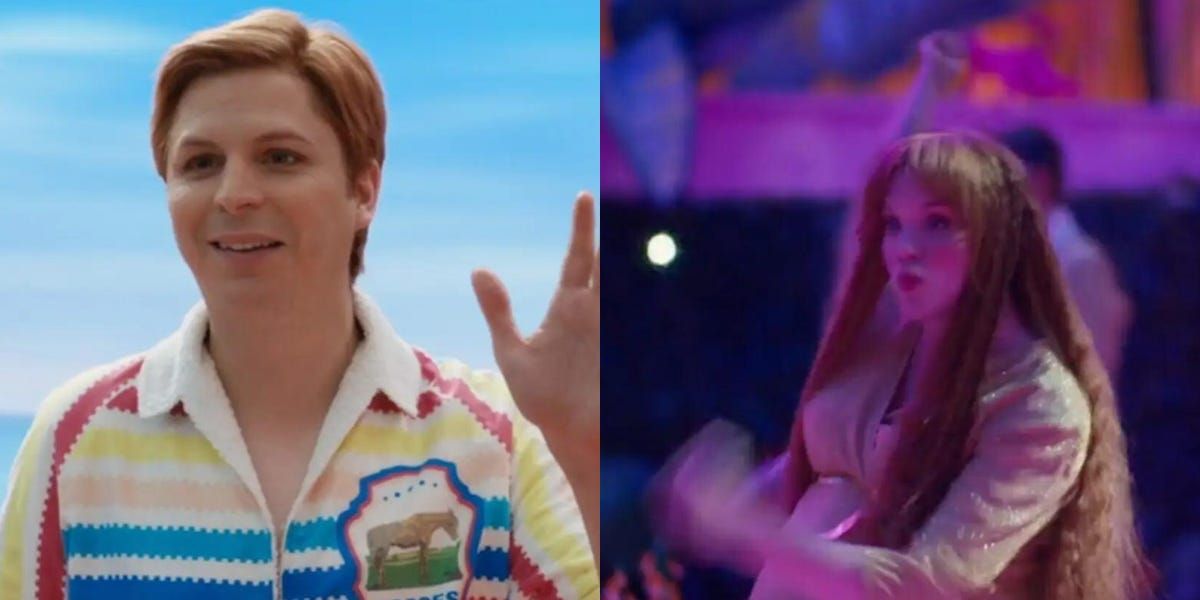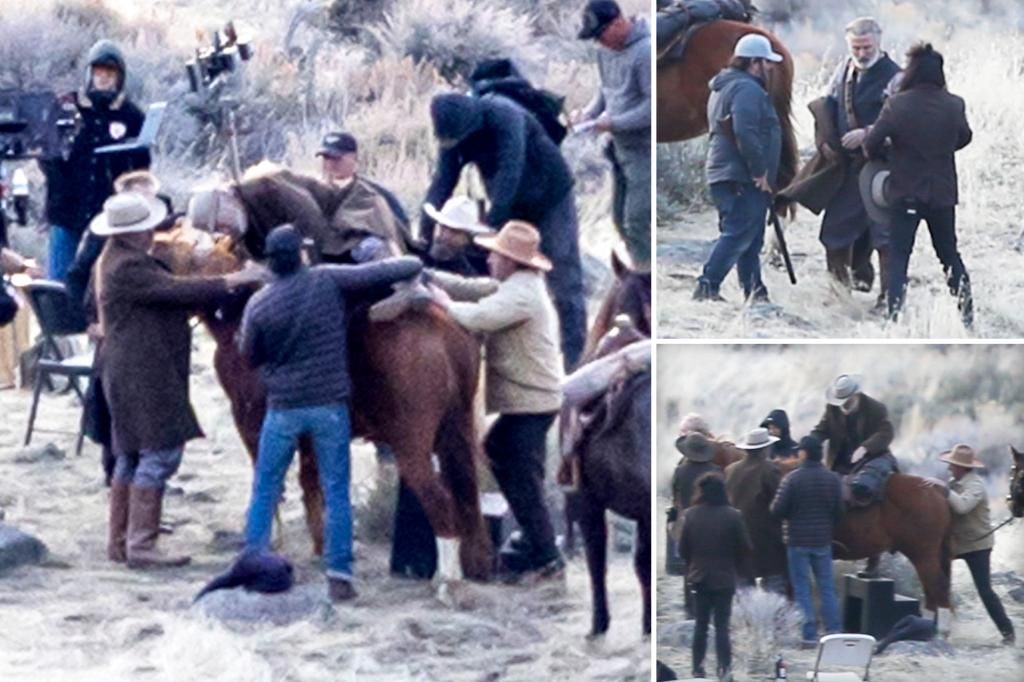Allan, Midge, Sugar Daddy Ken & More
Warning: Minor spoilers ahead for "Barbie," now in theaters.
"Barbie" features several discontinued dolls, including Michael Cera's Allan and Emerald Fennell's Midge.
Here's what to know about the forgotten dolls and the controversy surrounding them.
Get the inside scoop on today’s biggest stories in business, from Wall Street to Silicon Valley — delivered daily. Loading Something is loading. Thanks for signing up! Access your favorite topics in a personalized feed while you're on the go. download the app Email address By clicking ‘Sign up’, you agree to receive marketing emails from Insider as well as other partner offers and accept our Terms of Service and Privacy Policy
"Barbie" reintroduces several forgotten dolls from the famous doll brand's history.
While a large portion of the "Barbie" cast plays different versions of Barbie or Ken, there are two key cast members who don't: Michael Cera, who plays a doll named Allan, and Emerald Fennell, who plays a doll named Midge.
Both characters are based on real dolls from Barbie parent company Mattel. Originally concieved of as friends that were part of Barbie's posse, the Allan and Midge dolls were discontinued and largely forgotten by most of the public — until now.
At the end of the "Barbie" movie, many more discontinued dolls — including Sugar Daddy Ken, Growing Up Skipper, and Earring Magic Ken — help Stereotypical Barbie (Margot Robbie) on her journey.
The New Yorker reported earlier this month that Mattel was initially nervous about the discontinued dolls' appearance in Greta Gerwig's movie.
"There was just an email that went around where they said, 'Do you have to remind people that this was on the box?'" Gerwig told the publication about the reaction to Allan.
Gerwig eventually persuaded the company to include him by explaining that "dealing with all the strangeness of it is a way of honoring" Barbie.
"Barbie seems so monolithic, and there's a quality where it just seems as if she was inevitable, and she's always existed. I think all the dead ends are a reminder that they were just trying stuff out," Gerwig told the New Yorker.
Here's what to know about the discontinued dolls.
A pregnant version of Midge led to the doll sidekick getting discontinued.
A side by side of Emerald Fennell next to a pregnant Midge doll. Gareth Cattermole / Staff / Getty Images / Lawrence Lucier / Getty Images
Midge Hadley was first introduced in 1963 as Barbie's best friend. According to Barbie experts, she was given freckles and less makeup to deflect concerns that Barbie was too adult and too sexy.
The original Midge dolls were discontinued after 1965, according to Polygon — but Midge returned in 1988 and lasted long enough to marry a groom edition of her own boyfriend Allan in the '90s. Barbie and Ken were there to celebrate the day.
Midge's downfall began in 2002, when Mattel released a pregnant version of the doll whose belly could be removed from her body and opened up to reveal a baby inside.
That caused an uproar among parents who believed the doll promoted teen pregnancy, per Time.
The controversy prompted Walmart to pull the pregnant doll from its shelves. Mattel eventually produced another version of Midge postpartum.
There is a distinct reference to this in "Barbie," when Helen Mirren's narrator says, "Let's not show Midge, actually. She was discontinued by Mattel because a pregnant doll is just too weird." Midge makes a few appearances in the film anyway, but is often put in the background.
Allan was discontinued potentially due to his closeness to Ken.
A side by side of Michael Cera next to an Allan doll. Jon Kopaloff / Getty Images / Lawrence Lucier / Getty Images
Allan was created as Midge's boyfriend and Ken's best friend in 1964 so the two couples could go on double dates. The original Allan doll wore a bright striped shirt like Cera does in the movie.
Allan was named after Allen Segal, Barbara Handler's husband. Handler's mother Ruth Handler created Barbie and named the titular doll after her daughter, according to The New York Times.
Both Midge and Allan could fit into the clothing of Barbie and Ken. But Allan's marketing tagline, "All of Ken's clothes fit him," backfired when it led to rumors that Ken and Allan were in a homosexual relationship, according to Attitude.
Allan was discontinued around the same time as Midge, but has occasionally reappeared in Barbie lore.
In "Barbie," Allan is the biggest cheerleader of the Kens and is mostly ignored by the Barbies.
Yes, Growing up Skipper was a real doll that could grow breasts when you pushed its arm.
Hannah Khalique-Brown plays Growing Up Skipper Karwai Tang / WireImage / Mattel Inc
The movie makes numerous references to Skipper, Barbie's younger sister. However, in the scene where Barbie and the humans meet numerous discontinued dolls, there is a special version of Skipper present: Growing Up Skipper.
According to Glamour, Growing Up Skipper was created in 1975 as a way to teach kids about growing up and puberty. The doll would get taller and grow bigger breasts when you moved one of its arms backward.
Mattel also gave her a friend, Growing Up Ginger, before ultimately discontinuing both.
Video Girl Barbie got in trouble with the FBI
Mette Towley plays Video Girl Barbie Wiktor Szymanowicz / Anadolu Agency via Getty Images / TIMM SCHAMBERGER / DDP / AFP via Getty Images
Next to Growing Up Skipper is Video Girl Barbie, a Barbie doll fitted with a video camera inside her. Released by Mattel in 2010, Video Girl Barbie could record 30 minutes of video and stream it to a computer.
Months after the doll's release, the FBI released a "cyber crime alert" stating that it could be used for child pornography, CBS reported.
Mattel released their own statement saying: "The FBI is not reporting that anything has happened. Steve Dupre from the FBI Sacramento field office has confirmed there have been no incidents of this doll being used as anything other than as intended. Mattel products are designed with children and their best interests in mind. Many of Mattel's employees are parents themselves and we understand the importance of child safety — it is our number one priority."
The doll was ultimately discontinued in 2012.
Sugar Daddy Ken was controversial due to his suggestive name
A side by side of Rob Brydon next to a Sugar Daddy Ken doll. Karwai Tang / WireImage / Mattel Inc
There are also two discontinued Kens that take part in the scene with all the forgotten dolls. The first is Sugar Daddy Ken, a modern doll portrayed by British actor Rob Brydon.
Sugar Daddy Ken was created in 2009 for Barbie's 50th anniversary as part of the adult doll collection line for Mattel. Despite the suggestive name – Sugar Daddy refers to an older man who pays a younger woman for companionship – Sugar supposedly refers to this Ken doll's dog, a white West Highland terrier.
Despite the controversy surrounding his name, Mattel spokesperson Michelle Chidoni told ABC at the time: "At the end of the day, this collection is targeted toward adults. While the name of the doll does refer back to the dog, I think people are going to interpret it as they want to interpret it."
Earring Magic Ken was discontinued and recalled after being associated with the gay community
Tom Stourton plays Earring Magic Ken. Wiktor Szymanowicz / Anadolu Agency via Getty Images / Yvonne Hemsey / Getty Images
Earring Magic Ken also appears in his signature purple vest.
In the 1990s, Mattel attempted to give Ken an updated look. This led to the creation of Earring Magic Ken in 1993, a Ken doll that wore a purple mesh shirt, a pleather vest, a necklace, and an earring in one ear.
According to Dazed, the doll was a big hit with the gay community. But the doll also received widespread backlash for its perceived association with the LGBTQ+ community and thus was eventually discontinued and recalled.
According to Dazed, critics pointed out that the necklace looked like a cock ring, a sex toy.
"We're not in the business of putting cock rings into the hands of little girls... It's a necklace," Lisa McKendall, Mattel's head of marketing and communications, told the Chicago Reader at the time. "It holds charms he can share with Barbie. C'mon, this is a doll designed for little girls, something like that would be entirely inappropriate."
Source: Insider


